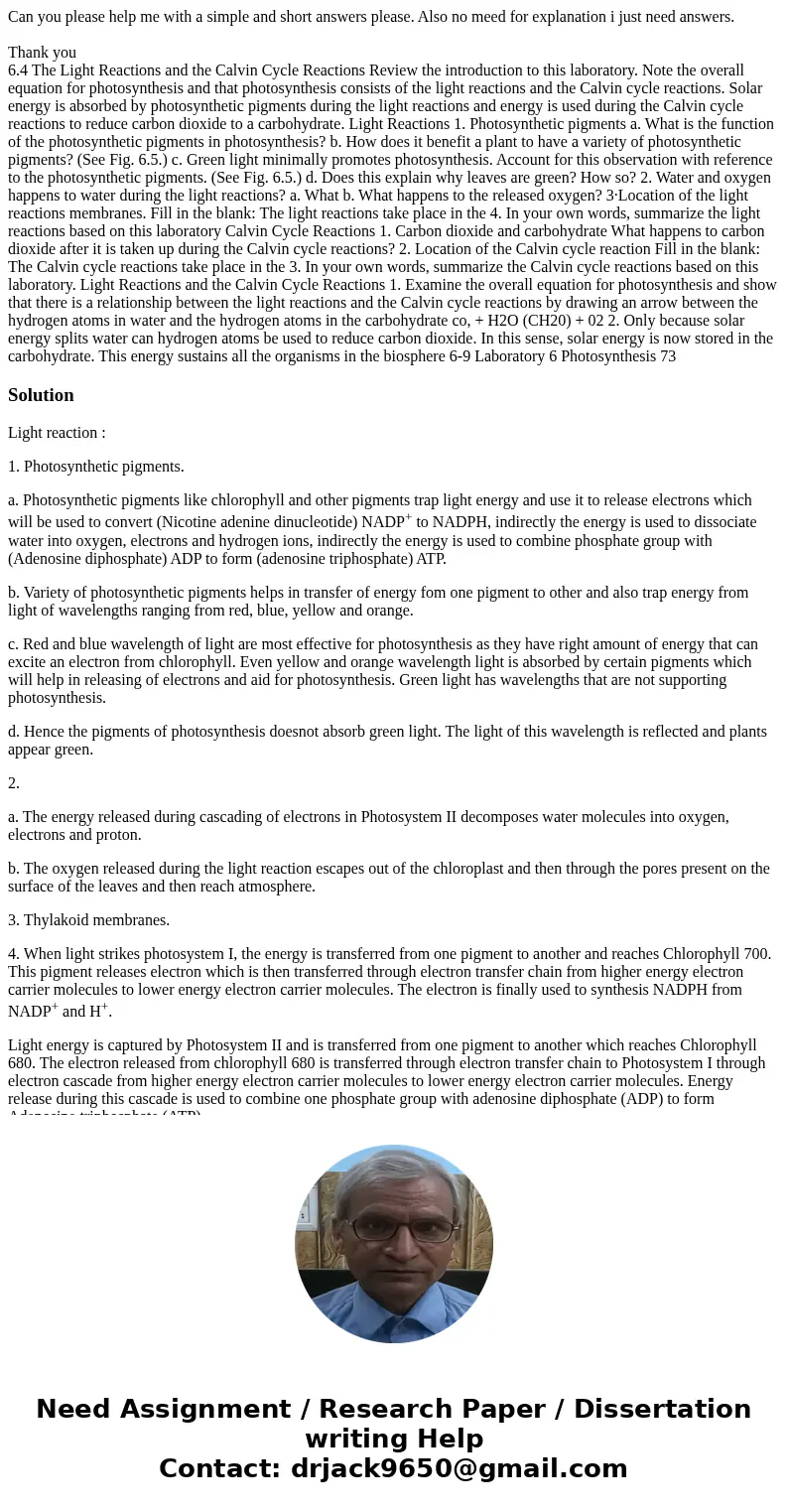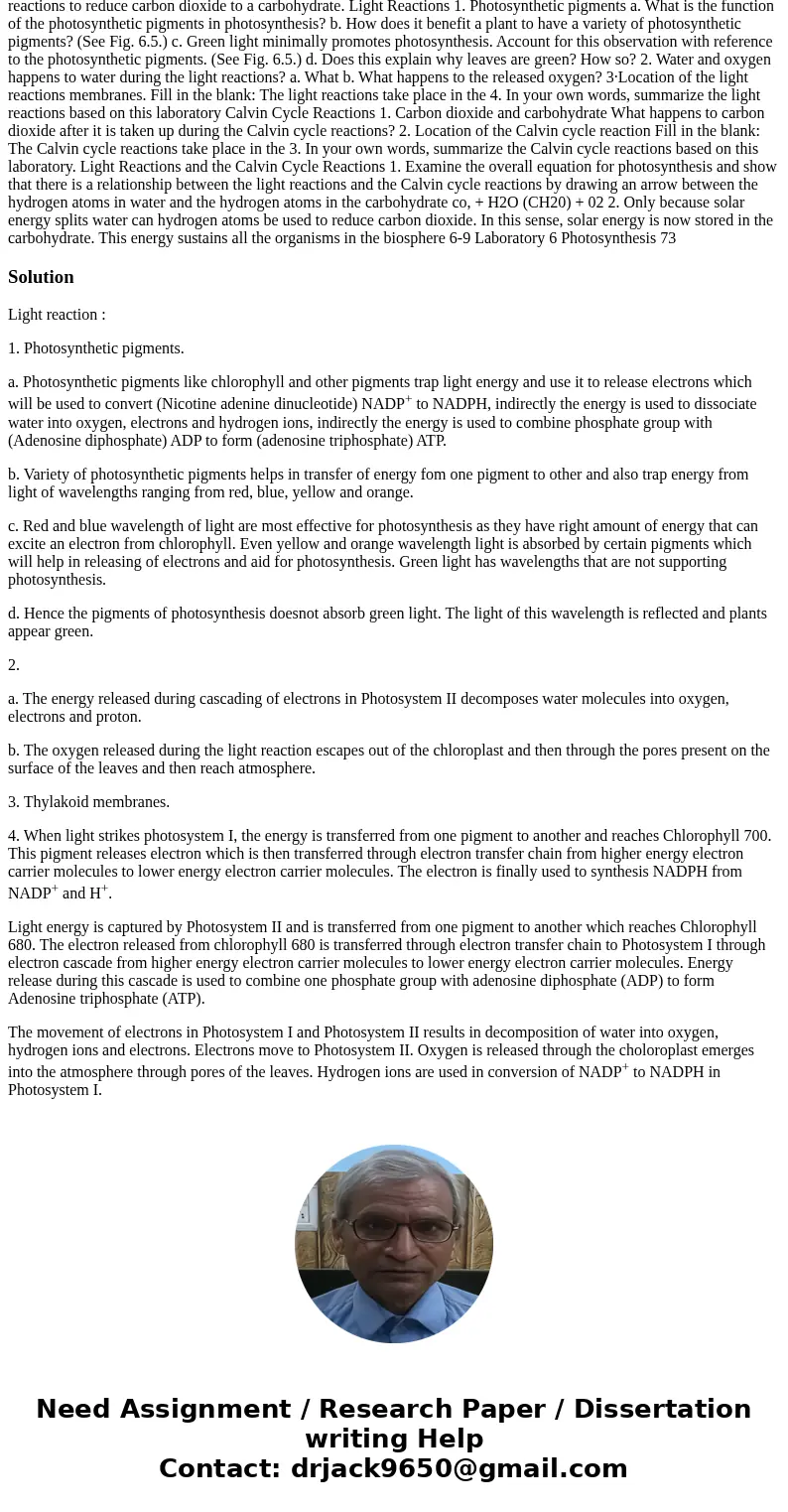Can you please help me with a simple and short answers pleas
Solution
Light reaction :
1. Photosynthetic pigments.
a. Photosynthetic pigments like chlorophyll and other pigments trap light energy and use it to release electrons which will be used to convert (Nicotine adenine dinucleotide) NADP+ to NADPH, indirectly the energy is used to dissociate water into oxygen, electrons and hydrogen ions, indirectly the energy is used to combine phosphate group with (Adenosine diphosphate) ADP to form (adenosine triphosphate) ATP.
b. Variety of photosynthetic pigments helps in transfer of energy fom one pigment to other and also trap energy from light of wavelengths ranging from red, blue, yellow and orange.
c. Red and blue wavelength of light are most effective for photosynthesis as they have right amount of energy that can excite an electron from chlorophyll. Even yellow and orange wavelength light is absorbed by certain pigments which will help in releasing of electrons and aid for photosynthesis. Green light has wavelengths that are not supporting photosynthesis.
d. Hence the pigments of photosynthesis doesnot absorb green light. The light of this wavelength is reflected and plants appear green.
2.
a. The energy released during cascading of electrons in Photosystem II decomposes water molecules into oxygen, electrons and proton.
b. The oxygen released during the light reaction escapes out of the chloroplast and then through the pores present on the surface of the leaves and then reach atmosphere.
3. Thylakoid membranes.
4. When light strikes photosystem I, the energy is transferred from one pigment to another and reaches Chlorophyll 700. This pigment releases electron which is then transferred through electron transfer chain from higher energy electron carrier molecules to lower energy electron carrier molecules. The electron is finally used to synthesis NADPH from NADP+ and H+.
Light energy is captured by Photosystem II and is transferred from one pigment to another which reaches Chlorophyll 680. The electron released from chlorophyll 680 is transferred through electron transfer chain to Photosystem I through electron cascade from higher energy electron carrier molecules to lower energy electron carrier molecules. Energy release during this cascade is used to combine one phosphate group with adenosine diphosphate (ADP) to form Adenosine triphosphate (ATP).
The movement of electrons in Photosystem I and Photosystem II results in decomposition of water into oxygen, hydrogen ions and electrons. Electrons move to Photosystem II. Oxygen is released through the choloroplast emerges into the atmosphere through pores of the leaves. Hydrogen ions are used in conversion of NADP+ to NADPH in Photosystem I.


 Homework Sourse
Homework Sourse